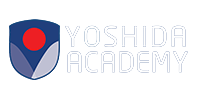While interviewing candidates for any position on my team, I always ask some form of this question, “What is the difference between training and learning?”
After a brief pause for thought, they often give good answers such as: “Training focuses on the how, while learning focuses on the why,” or “Training transfers skills, and learning transfers knowledge,” or even “Training should be based on learning.”
These answers all miss the mark.
Consider one of the best answers I’ve heard: “Training is what we do, learning is what the participants do.” Yes, this answer is spot on without making a value judgment (Don’t worry, we’ll get “judgy” soon)!
Let’s contrast training and learning:
Training is directive — You do it to someone.
Learning is reflexive — You do it to yourself.
Training is passive — “They were trained.”
Learning is active — “They learned.”
With this in mind, we see that the primary difference is focus.
Training is centered around the trainers and the knowledge, skills, and behaviors they impart. It's about the trainer unscrewing the top of your head and stuffing as much content in as they can.

Learning, on the other hand, is focused on the learners discovering the desired knowledge, skills, and behaviors. It’s about you experiencing the content by discovering it, working with it and by making mistakes.
Close your eyes and… wait, you can’t read with your eyes closed, so scratch that. Keep your eyes open and visualize the years you spent in school, specifically during lectures. How much of that information that was thrown at you do you remember?
Now, still keeping your eyes open, think about a time you had to learn something on your own. Where you had to perform a task through trial and error. How much of that do you remember?
For most of us, retaining information that we are force fed is much harder than what we experience. So, if we are serious about creating lasting and meaningful change, we need to focus on the learner, not the trainer.
There is a simple way to shift our mindset from training to learning. To badly paraphrase John F Kennedy, “Ask not what you can do for the learners, ask what the learners can do for themselves.”
In less grandiose terms, we just need to keep a single, simple question top of mind:
“What is the learner doing?”
In an instructor-led course (including webinars) a practical answer to this question looks like this:
• Encourage discussions using the Socratic method (Webinars can use the chat feature)
• Role-play/practice, practice/role-play, and role-play/practice
• Opinion polls
• Small group activities (Many webinar services provide breakout rooms) Discovery activities like software scavenger hunts or product research— participants report findings
• Did I mention practice/role-play?
• Let participants drive during software demos
• Replace software demos with guided software discovery
• Don’t forget the value of role-play/practice
Sounds like the participants are doing all the work, right? Well, that’s the point.
If we desire to be successful as learning professionals, we must ensure we keep our focus on what matters, the learners.


